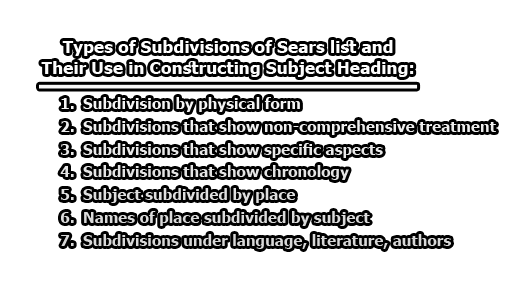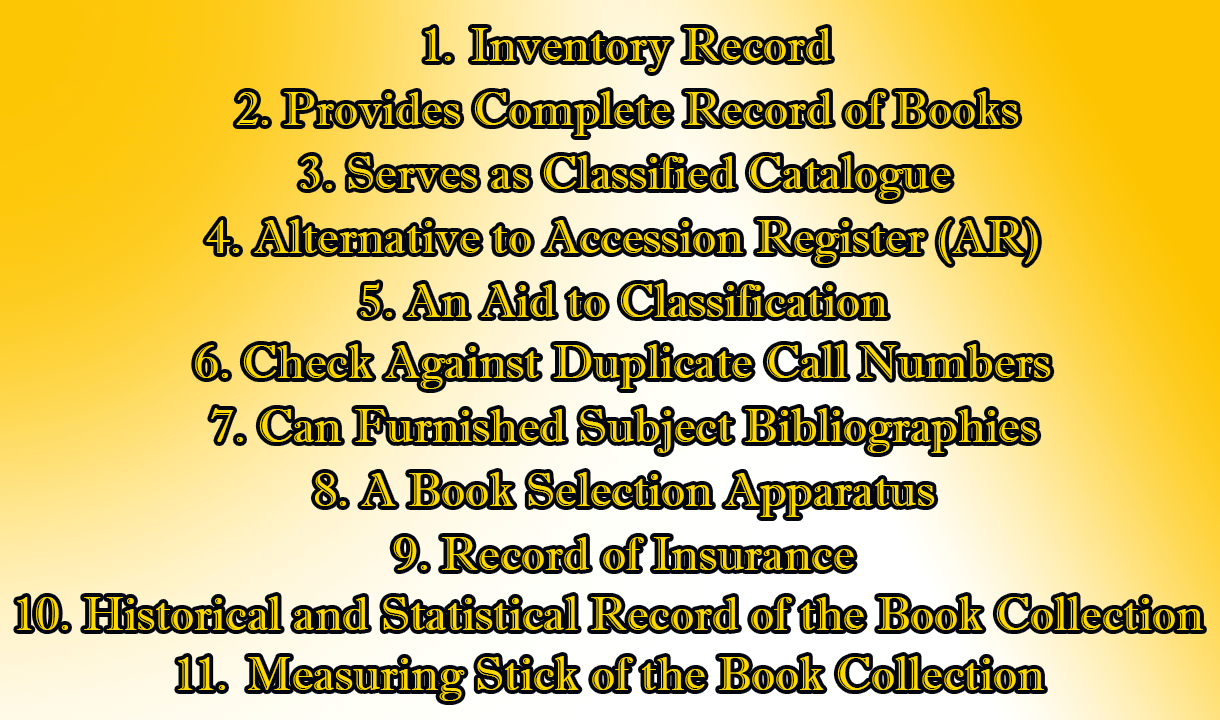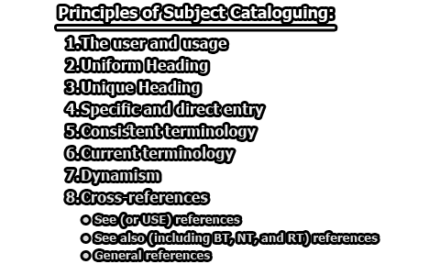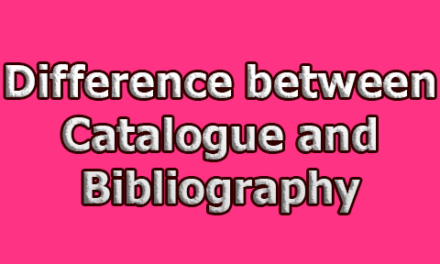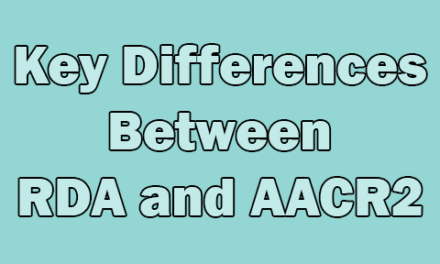A subject heading is a part of a systematic list of terms that describe a given subject matter, e.g. in a library catalog. It is the most specific word or phrase that describes the subject or one of the subjects of work, selected from a list of preferred terms and assigned as an added entry in the bibliographic record to serve as an access point in the library catalog. In the rest of the article, we are going to discuss types of subdivisions of sears list and their use in constructing subject heading.
Definition of Subject Heading:
“Subject heading is the subjects of a book or other library material which is selected from a subject heading list and assigned as an added entry in the bibliographic record and enables the work to be searched.” (Librarianship Studies and Information Technology)
“Subject headings are controlled lists of terms or phrases used to describe the subjects of items.” (Science Direct)
“An index term, subject term, subject heading, or descriptor, in information retrieval, is a term that captures the essence of the topic of a document. Index terms make up a controlled vocabulary for use in bibliographic records.” (Wikipedia)
“A subject heading is a specific word or phrase used to find and organize books and articles by topic. Subject headings can be a great way to easily find things related directly to your topic.” (Dickinson)
Types of Subdivisions of Sears list and Their Use in Constructing Subject Heading:
1. Subdivision by physical form: There are standard terms known as form divisions, which may be used as subdivisions whenever appropriate. They show what a book is in its physical form rather than what it is about. These terms are:
- Bibliography
- Catalogs
- Dictionaries
- Directories
- Gazetteers
- Indexes
- Maps
- Outlines, syllabi, etc.
- Registers
- Statistics
- Tables
- Terminology
As Subdivisions, these terms are usually formed headings, though some of these terms are used alone as actual subject headings. For examples;
Bibliography – 010
SA – subjects and names of persons and places with the subdivision Bibliography, e.g.
Subjects: Agriculture – Bibliography
Person: Shakespeare, William, 1956-1916 – Bibliography
Places: United States – Bibliography
Dictionaries USE Encyclopedias and Dictionaries, and subject names of languages and names of voluminous authors with subdivision Dictionaries, e.g.
English Language – Dictionaries
English Literature – Dictionaries
Shakespeare, William, 1956-1926 – Dictionaries, 833.303
2. Subdivisions that show non-comprehensive treatment: Some books may be general in subject but are comprehensive in scope. Random or abrupt essays on a topic, if they do not present a connected, comprehensive account, laboratory manuals of a subject, periodicals on a particular field are of this type. These terms are:
- Handbooks, manuals, etc.
- Laboratory manuals
- Periodicals
- Societies
According to the direction given under these terms such subject headings can be formulated thus:
- Photography – Handbooks, manuals, etc.
- Chemistry – Laboratory manuals.
- Women – Societies
3. Subdivisions that show specific aspects: Some works may represent particular aspects of a subject, e.g. it may be (i) a history, or (ii) philosophy of a subject; (iii) research in the field; (iv) laws about it; how to study and teach it. These concepts applied to general subjects are expressed by such heading:
- Library – History
- Printing – History
- Agriculture – Research
- Medicine – Research
- Libraries – Law and Legislation
- Information Science – Study and Teaching
4. Subdivisions that show chronology: There are many works covering specific areas or generally accepted periods of a country’s history. To narrow down the search in the catalog, such chronological subdivisions are necessary, viz;
- United States – History – 1861-1865, Civil War
- Bangladesh – History – 1971, Liberation War.
5. Subject subdivided by place: Various subject headings in the fields of Education, Science, and Technology are followed by permission to subdivide the heading geographically, viz, Education 370. This means that if the book deals with education in general only the heading will be education, while if it deals with the states of education in Bangladesh, the heading will be Education – Bangladesh.
6. Names of place subdivided by subject: In general, names of countries are used first followed by the subject if the subject covers a particular country, e.g. History of Bangladesh; A census of Peru; The government of India; Population of Russia; Climate of Alaska; Boundaries of Kashmir, etc. Here are the desired headings would be;
- Alaska – Climate
- Bangladesh – History
- India – Politics, and government
- Russia – Population
- Kashmir – Boundaries
- Peru — Census
7. Subdivisions under language, literature, authors: There are various subdivisions in language, e.g. Dictionaries, Grammar, History, Idioms, Study & Teaching, Synonyms, and antonyms, etc., and various subdivisions in literature, i.e. Bibliography, Collections, Dictionaries, History and Criticism, indexes, etc. All these are provided under the English language and English literature as ‘key language’ and ‘key literature’ which can be equally used for other languages and pieces of literature of the world. In place of the English language – Dictionaries, etc. We can use;
- Bengali language – Dictionaries
- Bengali language – Grammar
- Bengali language – History
- Bengali language – Bibliography
- Bengali language – Collections
- Bengali language – History & criticism
Key Author: All subdivisions that may use under an author for his works have been listed alphabetically under Shakespeare, William, as the ‘Key Author’, i.e. Bibliography, Biography, or Criticism or Drama, Fiction, Poetry of Shakespeare can be used equally for other voluminous authors, i.e.
- Tagore, Rabindranath, 1861-1941 – Bibliography
- Nazrul-Islam, Quzi, 1891-1976 – Bibliography
- Tagore, Rabindranath, 1861-1941 – Fiction
- Nazrul-Islam, Quzi, 1891-1976 – Poetry
Note: If the work does not discuss any specific language or literature, but contains discussions in general, or on various languages or pieces of literature of the world, then we are to adopt headings under general language and languages 400 and under literature 800.
Finally, we can say that the sears list provides a basic vocabulary of authorized terms together with suggestions for useful cross-references. It is an alphabetical list of terms and it is unique among subject heading lists.

Former Student at Rajshahi University

